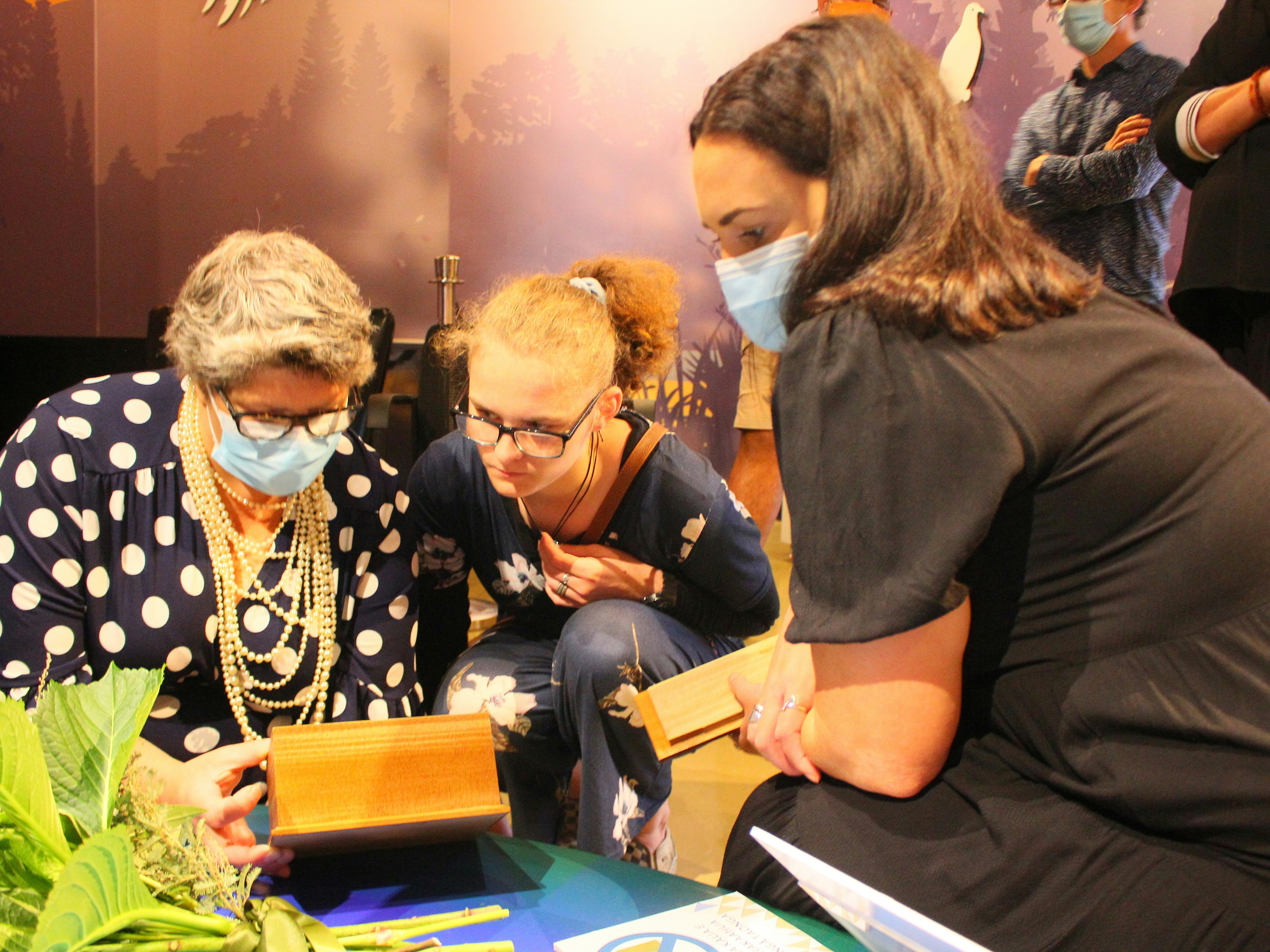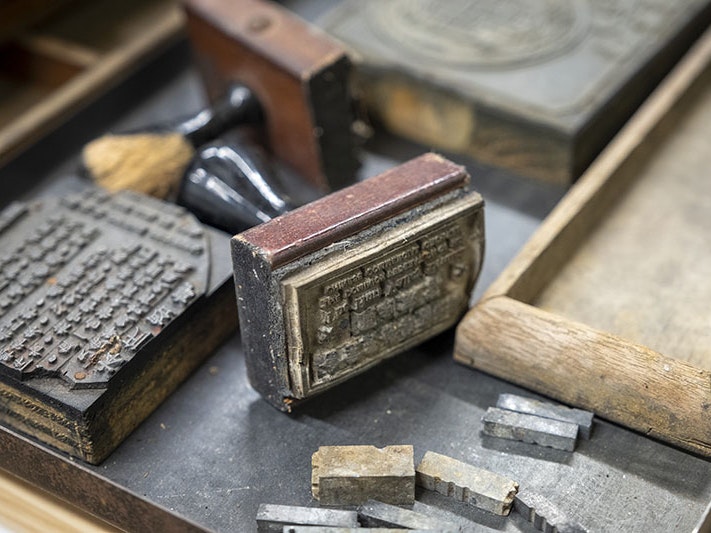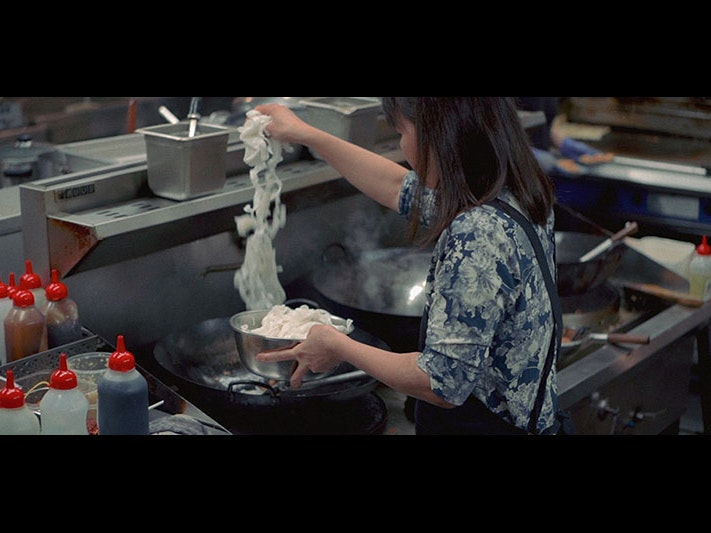
Repatriation case study: A soldier returned
Four years after human remains were deposited at the Te Awamutu Museum, the Museum team went about repatriating a soldier who fell at the Battle of Orākāu 158 years after his passing.
Free museum entry for New Zealanders and people living in New Zealand
Open every day 10am-6pm
(except Christmas Day)
Free museum entry for New Zealanders and people living in New Zealand
In response to our public callout for Chinese New Zealanders to share stories of their connection with their heritage languages, Aucklander George Thien brought together people from across the motu to recite the lyrics to a famed Teresa Teng song in their chosen language.
Watch the video and pay attention to the subtle differences – and similarities! – in the languages.
There is a transcript below the video and an interview with George in which he shares his story and how the video came about.
Composite image comprising screenshots from Recording of the Chinese Dialects on 16 Jan 22, recording by George Thien, 16 Jan 2022. Images courtesy of George Thien
When Dr George Thien heard that Te Papa was keen to hear from people passionate about highlighting the diversity of Chinese languages in Aotearoa, he felt compelled to respond. In this video, Dr George Thien convinces seven of his friends to jump on Zoom and pay tribute to their various mother tongues … and to the legendary Taiwanese Chinese singer, Teresa Teng!
After a brief introduction from George, ‘project co-ordinator’ Helen Ngu takes over as Chair of the meeting. Each of the speakers then takes turns introducing themselves in their languages and telling us about their experience of ‘the fresh quality of the air in New Zealand’. Finally, they each recite the lyrics of Teresa Teng’s song, 你怎麼說 (sometimes known in English as ‘What Do You Have to Say’), lovingly translated by each speaker into their own tongue.
Listen carefully to how the speakers sound while speaking about very similar topics in their own languages – you may be surprised at how different they sound! Super savvy listeners may observe that two of the video’s guests speak Hakka (also referred to as Kèjiāhuà or ‘Kheh’). However, they are speaking two different variants of the language – the Xin On and Ho Po dialects.
George and Helen, a heartfelt thanks to you and your guests Vanessa Zhang, Stephen Goh Ling Ngu, Lee Vui Tong, Frendy Lin, Koong Yoong Thien, Kathy Cheung and Maureen Sim for all your effort and enthusiasm.
George: Hi. Kia ora everybody, this is the Asian language project by New Zealand Museum, and we are a group of volunteers here to show, from our part here, the Chinese languages where consist of, according to some reports, there are over 50 dialects. We are taking a sample of it here – six and a half dialects, Chinese dialects, that we will show in this little project/recordings.
So predominantly they will recite a Chinese song by our legendary Chinese singer Teresa Teng and please listen carefully for the similarities and the differences among the six and a half dialects.
Why six and a half? The half belongs to two sub-Hakka dialects.
Let’s not take too much of the time, and over to you Helen.
Helen: Thank you George.
Hi everyone, my name is Helen and I am currently in Wellington. I am the co-ordinator for this meaningful project with Dr George. My own dialect is Fuzhou from Sarawak, Malaysia.
I am going to invite the first speaker: Dr Lee Vui Tong from Taiwan representing one of the dialects, Kejia (Xin On Hak). Dr Lee, over to you please.
[Dr Lee Vui Tong speaks – this is not transcribed.]
Thank you, Dr Lee for representing the Kejia (Xin On Hak).
The next speaker representing the Kejia (Ho Po Hak) is Mr Thien Yoong from Hamilton. Mr Thien, over to you please.
[Thien Kong Yoong speaks – this is not transcribed.]
Thank you, Mr Thien for representing the Kejia (Ho Po Hak).
The next speaker representing the Fuzhou or Hokchiu is Mr Stephen Ngu from Auckland.
Over to you, Mr Ngu, please.
[Stephen Ngu speaks – this is not transcribed.]
Thank you, Mr Ngu, for representing the Fuzhou or Hokchiu.
The next speaker representing Putonghua, Mandarin speaker from Beijing, is Ms Vanessa.
Over to you, Ms Vanessa.
[Vanessa Zhang speaks – this is not transcribed.]
Thank you Ms Vanessa for representing Putonghua, Mandarin.
The next speaker representing the Chaozhou, Teochew is Ms Maureen Sim from Auckland.
Ms Maureen, over to you, please.
[Maureen Sim speaks – this is not transcribed.]
Thank you, Ms Maureen for representing the Chaozhou, Teochew.
The next speaker representing the Fujian, Hokkien is Ms Frendy Lin from Auckland.
Ms Frendy, over to you, please.
[Frendy Lin speaks – this is not transcribed.]
Thank you, Ms Frendy for representing the Fujian, Hokkien.
I will now invite the last speaker representing the Guangdong, Cantonese from Hong Kong is Ms Kathy.
Ms Kathy, please, over to you.
[Kathy Cheung speaks – this is not transcribed.]
Thank you, Ms Kathy for representing the Guangdong, Cantonese.
George: A very big thank you to all the speakers representing the six-and-a-half Chinese dialects for this project.
The project is recorded via the Zoom video meeting recording, which is a common and popular mode of official, as well as casual, meeting during the Covid-19 situation in 2021, 2022.
We hope that you have enjoyed it and maybe learned something from it. Thank you very much.
Interview with Grace Gassin, Curator Asian New Zealand Histories
What motivated you and your friends to create this video for us?
There were two main motivations: the first one is we’re proud to share our culture – and part of a culture is the language – to people in our host country of New Zealand. The second is we wanted to create more awareness of the diversity that exists within our diversity. There are so many Chinese dialects and they can sound so different. We’re like foreigners to each other. Seriously, we don’t even understand what each other is saying.
Why don’t you tell us a little about your own linguistic and cultural background?
I come from Malaysia, the part that’s in the island of Borneo, a remote island full of jungle and trees. Dad is (and speaks) Hakka, one type of Hakka, and Mum is from the Fuzhou clan. So I’m half Hakka, half Fuzhou, and growing up in this remote place we lived very closely with our neighbours, local indigenous people – again with many different dialects. So we sit together in classes, we work together, and when we went in the coffee shop, we eat together, it’s all … freefall! We need really to learn, for practical reasons, what this or that dish is or which ethnicity does it belong to; we needed to memorise those things. And next time when we order it, it has to be in their dialect, so we get to know each other’s dialect. Or when we encourage each other for example, if it’s someone who speaks a different dialect we will use that one, it just comes naturally.
A lot of people who have grown up in Malaysia are really used to switching into a variety of other languages or even code-switching (switching between languages in a single conversation), aren’t they?
I think this is part of respect rather than anything else, it’s to make people feel comfortable that we, you know, we try to be close. That’s how I feel about it. And then I married my wife who is Teochew. So already, I can speak three dialects and, of course, the one that I was taught formally in school was Mandarin, which is what everybody knows when they think of Chinese – ‘Nihao’ – that type of format. So that’s four [laughs].
In school, there’s also the local common knowledge that they, people of all ethnicities, will adopt. For example Hokkien, people will speak that commonly if it’s what the majority speaks there, so everybody will adapt to that. In different towns, because my dad used to be a government servant who was often transferred from one place to another, each town has different languages, different dialects, customs, and cultures. So I’m kind of used to different cultures. And then of course, the other influence would be from watching TV at home in the 70s, you can get quite glued to those Chinese serials that come from Hong Kong or Taiwan and then you get to follow those language that they use. It’s how I learned my Cantonese, another language which is commonly used. Around the same time, at the age of about 14, I also went over to England to attend a Catholic boarding school and met with some Hong Konger classmates there. So, in this way, my Cantonese also got refined in England. I was there for about 10 years and then I came back to Malaysia, working in different towns and in different capacities until I came to New Zealand to do my doctorate degree. I’m now teaching at AUT in business management and have been there since 2004.
How did you hear about our public callout?
I think I came across a Stuff article or something with you in it talking about this project and I thought, wow, this is interesting. And then me and my wife started talking about it [in Auckland], then it spread to a couple of friends in Wellington, and so we tried practising in different dialects, and we laughed a lot about it. And then we said, hey, why don’t we try and do this with Grace? Then I emailed you to see what you thought of my idea and you called me back. Anyway, that was the thing that sparked the whole adventure.
Can you tell us how you organised for everyone to come together for your multilingual Zoom recording? I know it was quite a bit of work!
So for us, then we started to get serious trying to look for a piece that we could read in different dialects – there were only four of us at the time – and we chose a poem. So we started to get a few more people to try and use their own dialects on that point. The group grew to about six and then somebody suggested no, I don’t like this poem, it’s not impactful … so we started go back to the drawing board and then suddenly I came up with the idea that we use a very universal song that every Chinese person knows, so we had a meeting and somebody says, okay, tell me the song. And I mentioned Teresa Teng. Everybody cheered – ‘Wow! Yes, of course we know it, everybody knows it or knows the name.’ These couple of guys, they just started singing the whole song and wow [laughs], the feeling at that point in time was like, this Teresa Teng song was so binding, you know? I mean, she’s been dead for maybe 20 or 30 years, but it lives on, that legend. So everybody agreed on the spot, yes, we’ll do this … and then two or three dropped out! They found it too formalised and couldn’t find the right words in their ethnic language to describe some things, so they felt that it’s not complete or not perfect. So they drop off and so we had to get a few substitutes – I mean, we were not short of people. Everyone just wanted to be part of that song in their own dialect!
So after that, what happens? Of course, the meeting. Having been through all this, in hindsight, it was not easy because different people have different time of convenience and one of the Hakka people also got stuck in Taiwan in a Covid situation, so he had to, he had to do Zoom in from Taiwan in his car and because the time zone was different, he was driving to work or from work. And another had to take his family to somewhere to do some voluntary work in a park somewhere, he was warning me in case he got cut off. I said yeah, before we start, let’s pray hard so that we don’t have to repeat! The Mandarin and Cantonese ladies, they were totally cool about it because they could just recite the lyrics, it was like singing from a song sheet. But others I know of, my wife is one of them, she had to memorise like three times a day and consult uncles and aunties back in Malaysia to make sure that the words in Teochew are the absolutely correct word for this meaning and that meaning – so some of us took it really, really seriously. Unfortunately, the recording was a bit of amateurish, because Zoom is not our forte, but we hope that it just sort of reflects the situation at that time as well. Zooming is how we were communicating with each other and we are not professional!
No, but I loved how ‘real’ it was because of that and you guys really remind me of my own aunties and uncles!
When Helen, who recorded the video, forwarded it to me and a few other friends and the children of those friends who got hold of it, they had a ball of a time laughing at all those different languages and accents and copying. You know, the younger generation, they didn’t know their parents could speak so differently, because even if the video looked informal, we treated it seriously in terms of the words that we chose that we use and the kids seldom hear us speak in such a way. So there was a lot of piss-taking out of us from the children and children’s friends, but it was all good fun!
That’s beautiful, I’m so glad this project and the callout ended up giving your families so much reason for fun and laughter! What do you hope others watching the video will get out of it?
I hope it will help create more awareness of our diversity-within-diversity, more acceptance and understanding. I mean, it’s not a cure for everything in society, but we did have some discussions about what we hope will happen to people who take the time to listen? Well, hopefully, behind some laughs there will be some seriousness in accepting that yeah, okay, so people are different and we need to accept in a more mature diverse society and work on having less prejudices.
I remember during the 70s in England, it was not uncommon on a daily basis to hear people shouting at my back, ‘Speak English, please!’ ‘Excuse me, excuse me, speak English!’ Nowadays, you probably don’t hear that unless someone got up on the wrong side of bed, and I think things are maturing because there’s more global connectivity, but there’s still a lot more to do to push for.
Thank you so much to you and the others in your group for taking the time to respond to our public callout in such an amazing way. I’m so touched and just really glad you saw me in the paper or wherever it was that you did!
Many of us, we believe in things like fate, that things happen for a reason and sometimes you can’t force it. So, we can treat it as … it was fated that our lives crossed. And whether this [video and project] helps people or not … well, hopefully. We can only hope.

Four years after human remains were deposited at the Te Awamutu Museum, the Museum team went about repatriating a soldier who fell at the Battle of Orākāu 158 years after his passing.

Are you keen to improve or teach yourself a Chinese language but unsure where to start? This list is for you.

Tee Phee, owner of Wellington’s Little Penang restaurants, is a fluent speaker of Penang Hokkien and was always determined to ensure that her local-born children grew up speaking the language. Here she discusses her relationship with the language.